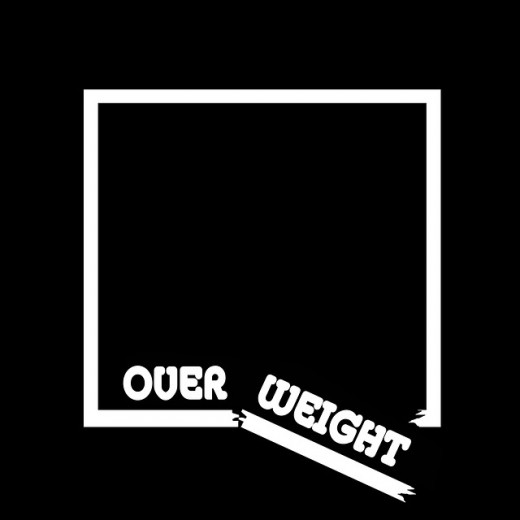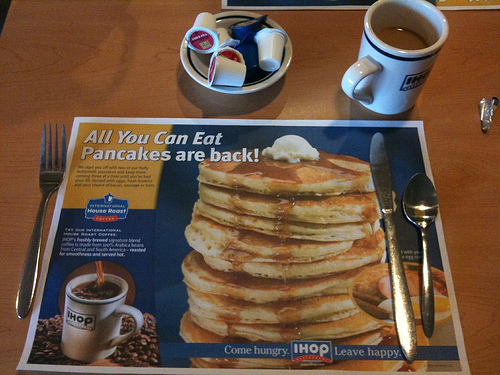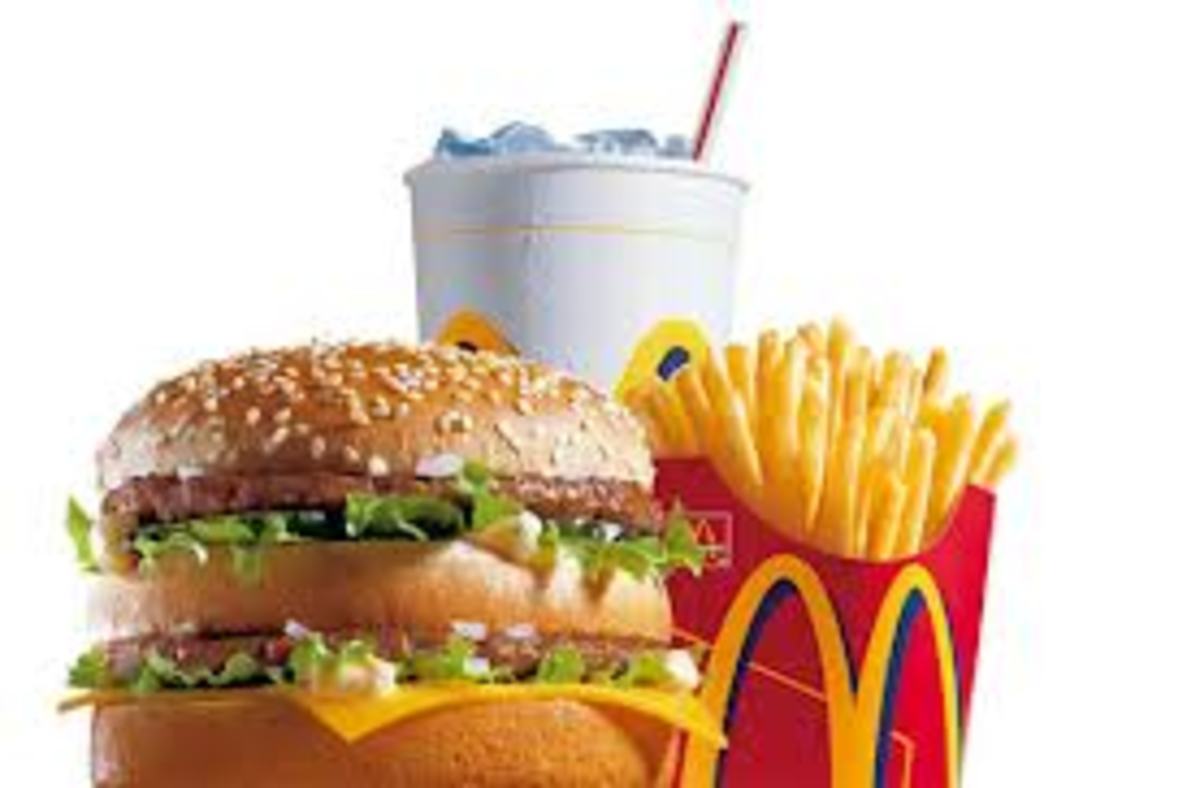Mexican Childhood Obesity Now Worst in the World Because of Vitamin T

Mexico Became the Fattest in the World
The Hubber blogdigz asked the question: How does childhood obesity affect children?
At one time, American and some Western European cultures held the belief that obesity, especially in businessmen, was a sign of success and wealth.
Today, obesity is a major problem in the USA and children are affected by it significantly. This is especially true since 1980, likely attributable to changes in technology, an increase in sedentary entertainment options, and changes in the food production and dining industry.
In addition, Mexico surpassed the USA in obesity in 2013 and has stayed at the top for the most populous nations in North America.
Mexicans' Evaluation of Obesity Problems
Mexicans say that Vitamin T is the problem -- Tacos, Tamales and Tostadas.
*
Since the 1990s, they also enjoy USA fast food that came to Mexico - burgers, pizzas, and deep fried chicken.
The Fattest In North America Since 2012
Obesity can lead to sleeping disorders such as sleep apnea.
Negative Effects of Obesity
Obesity probably never results in good effects.
Obese children and youth are at risk for Type II Diabetes, heart attack, and stroke; joint and bone problems; and eating disorders. Obesity can lead to sleeping disorders such as sleep apnea.
Obese children often are less capable of concentrating on schoolwork, sluggish, and sometimes lethargic. These youth can be depressed and suffer low self esteem and seem to be frequent targets of bullies and cyberbullies.
On top of all this, some parents purposely overfeed their children as a form of abuse with all of the associated effects. Other effects may emerge as obesity persists among American children and youth.
Overfeeding in the USA entails parents feeding toddlers and elementary school children enough to sustain 2-3 adults or more daily.
Overfeeding Children
- Childhood Overfeeding Epidemic
With childhood poverty, starvation, and malnutrition growing in parts of America, overfeeding is occurring in which toddlers and elementary school children are fed enough to sustain 2-3 people or more daily. - Health Insurance Companies Control Groceries
Will prizes and incentives convince people with health insurance to participate in healthier behaviors? Humana and Wal-Mart companies think they will. What do you think? - Can Government Control Food? - The Move to Oust Ronald McDonald
The advocacy group that stopped Joe Camel from selling cigarettes to kids and youth targeted Ronald McDonald for causing childhood obesity. Many readers of the news felt that it must be an April Fool's joke, but it was not.
On Losing Weight: Obesity and Bullying Studies
Recent Research
Epidemiology of Obesity in Children and Adolescents
Prevalence and Etiology
Luis A. Moreno, Iris Pigeot and Wolfgang Ahrens
Referece: Springer Series on Epidemiology and Public Health, 2011, Volume 2, Part 1, 69-93, DOI: 10.1007/978-1-4419-6039
Chapter 5: The Epidemiology of Childhood Obesity in Canada, Mexico and the United States. Authors: Cynthia L. Ogden, Sarah Connor Gorber, Juan A. Rivera Dommarco, Margaret Carroll, Margot Shields and Katherine Flegal.
Summary:
This article is very interesting and up-to-date, since it begins with 2007 data. It explains that in North America among a population of 440 million individuals in 2007, the three nations enjoyed different potential life spans (gender not considered):
- Canada - 81 years
- USA - 78 years
- Mexico - 75 years
Infant mortality/death rates followed the same pattern, by UN statistics, being 4.8, 6.3, and 16.7 per 1,000. Mexico visibly suffers the dramatically largest infant mortality, almost three times that of the USA.
Why the differences? -- Most of the public might point to poverty, lack of medical/health care, and fattening foods in Mexico. Is this true?
How about childhood obesity in these three countries? The article provides a lengthy discussion of the different ways to measure childhod obesity, settling on Child Body Mass Index (BMI) for Mexican children and the latest relevant data being from 2006 surveys. Newest Canadian information came from 2004 and involved childhood height and rate comparisons.
United States of America - The Fattest For Many Years
Lead researcher on this article, Cynthia L. Ogden, PhD, is well versed in using and producing health statistics, including those related to childhood obesity.
Ogden deliveered the keynote address at the University of Alabama at Birmingham School of Nursing for a 2009 event titled Childhood Obesity: Trends, Treatments, and Troubles. Dr. Ogden is, in fact, an epidemiologist for the US National Center for Health Statistics of the CDC. She examines the prevalence and trends of obesity in America.
Translating Differences
No "Grand Obesity Survey" was available to administer for all of the North American Countries at the time of this study in the mid-2000s, so the definition of 1) overweight and 2) obese (severe overweight determined by some threshold measurement) likely differed among the three nations of interest.
Dr. Ogden and her team therefore applied International Guidelines to the data they gathered from Canada and Mexico. The international guidelines provided a sort of common denominator or a translation of the three data sets into a new "language" that made sense for each of the three.
These guidelines were the definitions as posed in the International Obesity Task Force (IOTF) definitions. For America, BMI or Body Mass Index was used.
Results for Ogden, et. al. and Aftermath
Before Mexico took the top obesity position, he research team found that among children and youth examined by surveys and the data Scrutinized through international guidelines.
Canada
- For the group of 7- to 13-year-old females, obesity doubled in the 15 years from 1981 to 1996. For boys of like age, it tripled.
- In 2004, 26% of children and youth from ages 2 through 17 were overweight or obese, and 8% of the total were obese.
Mexico
- Children under 5 years of age in Mexico, overweight prevalence increased from 4.2% to 5.3% between the 11 years between 1988 and 1999.
- In 2004, data from a 2000 survey showed among children and youth aged 10 to 17 that obesity prevalence was 9.2% to 14.7% for boys and 6.8% to 10.6% in the girls (Obesity Research Vol. 12, No. 2 p 215. Blanca E. del Rý´o-Navarro,et.al.: The High Prevalence of Overweight and Obesity in Mexican Children).
USA
- In the 26 years from 1980 to 2006, the prevalence of obesity shown by a high BMI (body mass index ≥ to 95th percentile) rose from 6% to 16% among boys and girls aged 2 through 19. This means that the number of youth with high BMI nearly tripled.
From these results, we saw that America had the largest proportion of obese children and youth, followed by Mexico, while Canada had the smallest percentage. Then things changed!
Mexico Takes the Lead In Obesity
The The United Nations Food and Agricultural Organization reported that Mexicans are now the most obese of all the world's larger nations, even as they battle hunger and malnutrition in 2013.
The same people who are malnourished are the ones who are becoming obese.
— Dr. Abelardo Avila, Mexico National Nutrition InstituteDiabetes alone kills as many as 70,000 people a year in Mexico. Over 400,000 new cases are diagnosed yearly.
Obesity Changes 2013 - 2015
- Mexico takes title of "most obese" from America - CBS News
A U.N. report says Mexicans are the heaviest of the world's larger nations, even as they battle hunger and malnutrition; how did it come to this? - Opinion: Can sugar tax help Mexico's obesity epidemic? - CNN.com
Mexico also wants legislation to take salt shakers off the tables in restaurants.
Too Much Unhealthy Food

Inventions from 1980 - 2010s That Can Increase Obesity
I can think of several inventions and cultural changes that contribute to sedentary behavior in American K-12 youth. Some major items include:
- 3D Movies at home.
- Cable and Satellite TV with 1,000 of channels
- High-Definition TV
- Personal Computers, Apple Computers...iPads, iPods, and as Craig Ferguson jokes, iHOP pancake houses.
- Virtual Reality
- Video Games
- DVDs - watch movies at home
- Cell phones and SmartPhones
- The Internet, especially Social Media and online role playing games (ORPS)
- Youtube and other video platforms
Other Changes That Can Increase Obesity
- Possible reduction in breastfeeding among new mothers - Evidence exists to substantiate the assertion that mother's milk helps prevent obesity not only in infancy, but also as the child matures: Cutting Edge Nursing Research.
- Childhood Overfeeding Epidemic
- Incorrect theory of the 1980s (at least in Ohio) that ADD or ADHD-diagnosed children and youth should not exercise at all because it was considered a distraction. Prolonged sitting at a desks (longer than other children) did not increase academic achievement. In addition, Ohio was the first state to successfully see ADD/ADHD qualify for Social Security Disability payments.
- Funding cuts to school athletic programs, physical education classes, marching bands
- Childhood medications for ADD/ADHD that caused weight increase.
- Adult mental health diagnoses given to children, with the result that some of the related medications administered caused weight gain.
- Rise in school violence and bullies - youth drop out of school to be home schooled, and physical education is often not considered.
- Installation of fast food chains' restaurants within high schools and middle schools.
- Drive Thru Windows at dining places and proliferation of fast and casual dining places.
- Increased use of high-salt, high-fat, high-sugar prepared foods in homes; irregular meal times.

Some Solutions For Childhood Obesity
- Fat Burning Exercises
American society is beset with media information and advertising that encourages indidivuals to lead a healthy lifestyle; and cut fats, and/or carbohydrates, and/or sugars, meats, dairy, and any number of culinary items from the daily diet. Body fat - Let's Move On the Healthy Schools Act
Before the world of the personal computer and the Internet arrived, the childhood activity realm consisted of outdoor play, school physical education twice a week, radio, television, stereo Hi-FI, Walk Man...
© 2011 Patty Inglish MS









